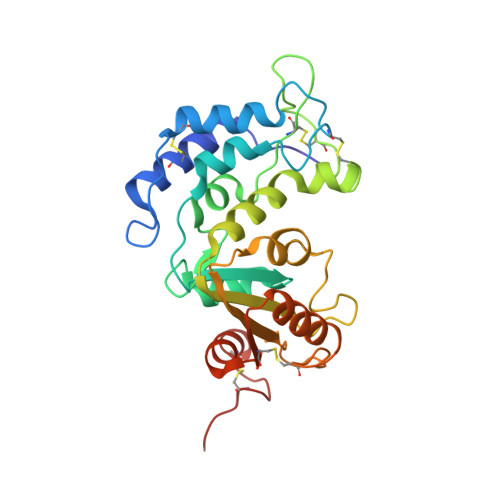Structural Studies of Intermediates Along the Cyclization Pathway of Aplysia Adp-Ribosyl Cyclase.
Kotaka, M., Graeff, R., Chen, Z., Zhang, L.H., Lee, H.C., Hao, Q.(2012) J Mol Biol 415: 514
- PubMed: 22138343
- DOI: https://doi.org/10.1016/j.jmb.2011.11.022
- Primary Citation of Related Structures:
3ZWM, 3ZWN, 3ZWO, 3ZWP, 3ZWV, 3ZWW - PubMed Abstract:
Cyclic ADP-ribose (cADPR) is a calcium messenger that can mobilize intracellular Ca²⁺ stores and activate Ca²⁺ influx to regulate a wide range of physiological processes. Aplysia cyclase is the first member of the ADP-ribosyl cyclases identified to catalyze the cyclization of NAD⁺ into cADPR. The catalysis involves a two-step reaction, the elimination of the nicotinamide ring and the cyclization of the intermediate resulting in the covalent attachment of the purine ring to the terminal ribose. Aplysia cyclase exhibits a high degree of leniency towards the purine base of its substrate, and the cyclization reaction takes place at either the N1- or the N7-position of the purine ring. To decipher the mechanism of cyclization in Aplysia cyclase, we used a crystallization setup with multiple Aplysia cyclase molecules present in the asymmetric unit. With the use of natural substrates and analogs, not only were we able to capture multiple snapshots during enzyme catalysis resulting in either N1 or N7 linkage of the purine ring to the terminal ribose, we were also able to observe, for the first time, the cyclized products of both N1 and N7 cyclization bound in the active site of Aplysia cyclase.
Organizational Affiliation:
Department of Physiology, University of Hong Kong, Hong Kong SAR, China.
















